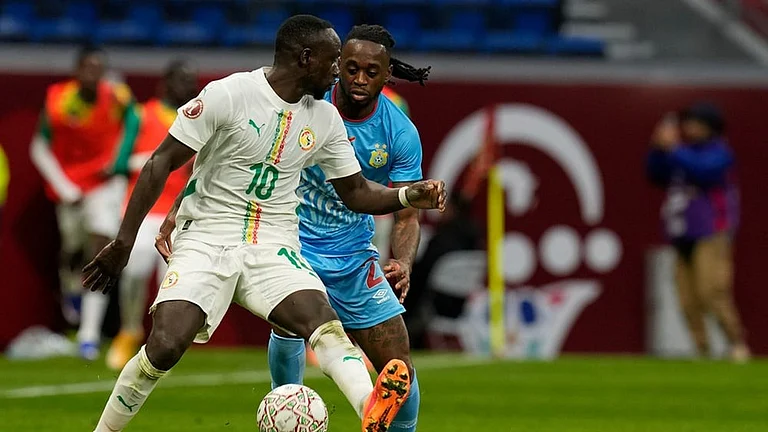In 2014, at the beginning of the big e-commerce war in India, homegrown Flipkart and global champion Amazon showcased a war chest of $1 billion and $2 billion each. While Amazon was bringing in its global expertise and experience, Flipkart was ready to fight tooth-and-nail to maintain its turf. It looked like a fight. But so much has changed in the past two years—Goliath seems to have nailed it. When Amazon’s global chief Jeff Bezos announced $3-billion largesse for Amazon India during his meeting with Prime Minister Modi last week, Flipkart had nothing to show.
In the last year or so, things have not gone well for Flipkart, with valuation falling, losses mounting and funding not easy to come in. Since November, Flipkart’s sales have reportedly not grown month on month. Worse, it has not been able to keep its recruitment commitments. In the last four months, Flipkart’s valuation dropped by $ 6 billion (to $9 billion) thanks to some of its minor shareholders running down their investments. At the same time, it is constantly losing space to Amazon, which is picking up in marketshare, gross merchandise value (GMV) or the total value of products sold and consumer preference. A Morgan Stanley Research note in February 2016 placed Flipkart’s share of the GMV in 2015 at 45 per cent, followed by Snapdeal with 26 per cent and Amazon with 12 per cent. (A cumulative GMV of $13.4 billion.) But that ratio changing fast.
Although Flipkart’s top management is trying to dismiss this loss in valuation—CEO Binny Bansal says it is a global phenomenon and cyclical—it’s not good news. The marking down by Morgan Stanley and other investors is likely to make raising funds harder for the company. This is confirmed by the fact that according to reports, in the last few months, Flipkart has been in talks with over 15 investors and none are ready to invest based on the company’s current valuation. Despite repeated requests, Flipkart did not respond to Outlook’s queries.
At a general level, many feel Flipkart’s valuation (like those of many Indian start-ups) is inflated. Says Kashyap Deorah, an entrepreneur and author of The Golden Tap, a book on start-ups: “India experienced speculative valuations at this scale in tech start-ups for the first time ever in 2014. It was probably benign on part of the start-ups to amplify the noise rather than setting the right expectations. They probably believed their own press. Now that the volatile and fictitious nature of valuations is unfolding, there is reaction in the opposite direction,” he says.
But specifically, what is really wrong with Flipkart? Experts feel that the entire model that Flipkart follows is flawed with no real focus on profitability. Says Technopak CMD Arvind Singhal, “They followed irrational market practices and never got the model right. Their business was built by the money steroid given by investors and publicity steroid by the media. Any business that is built on buying goods at Rs 100 and selling them at Rs 90 cannot survive.”
The other obvious thing is that Flipkart started as an Indian Amazon, and was trying now to compete with the real McCoy, which has 20 more years of experience in this game apart from deep pockets to sustain losses. Flipkart, on the other hand, runs on borrowed money. In the race to go one up, it increased its discounts, spent money aggressively on publicity and went after valuation.
At the same time, say experts, the company’s focus was all wrong: it foolhardily burned cash without a parallel plan to generate it. Says Indian e-commerce pioneer K. Vaitheeswaran, “Flipkart started a few years before Amazon India and should have utilised this time to build a wall around it. It didn’t. It also did not think or plan to be profitable. Their model was based on getting more customers, showing more GMV and getting more funding. Profitability was nowhere in the planning. The company is internally haemorrhaging and needs massive surgery.”
The company has a huge employee base and a massive salary bill, a drain on its funds. Sources say even new recruits are being given salaries of Rs 25-30 lakh. In the last few months though, Flipkart has had to pull down on its recruitment and delayed the joining dates for new campus recruits by six months. Says Singhal, “Walmart built a business by being thrifty and continues to be frugal. Flipkart on the other hand never earned a rupee and never realised how to earn money.”
To be sure, the bugle had been sounded at Flipkart. The first consequence of this was the change of guard with Sachin Bansal stepping down from the CEO’s post and making way for his co-founder Binny Bansal. In the following months, there were more casualties at the top level. This was followed by a massive cost-cutting move to show better numbers and a reorganisation of business. After a failed mobile-only strategy for Myntra, Flipkart has also shelved its plans for going mobile. To generate income, Binny Bansal has focused on the company’s logistics arm Ekart, and opened it up to other companies.
Some other belt-tightening measures include raising commission from sellers to spruce up margins. Flipkart has even scrapped the zero commission experiment it was running with 350 of its top sellers. Not stopping there, it reduced the time for return of products from the earlier 30 days to just 10 days on electronics, smartphones and books, three of its highest selling categories.
Of course, it is not that Amazon is not losing money but its cash-burn rate is probably the lowest in India. And Amazon is also streets ahead in customer service while the products on offer remain comparable with Flipkart. The battle is being played on four areas—technology, customer experience, prices and funding. Amazon seems to be having an upper hand in all of them.
Says Amazon India head Amit Agarwal, “The Indian customer cares about a selection of products at a low price and fast and reliable delivery. And that has been our USP and three pillars of growth. Our single-most focus is on growth and in the last three years we have seen tremendous momentum in organic growth. The fresh funds will also be deployed for this goal.” Amazon’s numbers have been impressive to say the least. Last year, it grew by 250 per cent year on year and in the first quarter of 2016, it has already clocked a growth of 150 per cent year on year.
By all counts, this round is going to Amazon which is inching towards the pole position in Indian e-commerce and with a big brother in the US ready to fill its war chest regularly, it will have little competition in India. Flipkart, on the other hand, really needs to pull up its socks and show better numbers than just GMV and move towards profitability before the game gets over.
***
Sequence Of Events
- Flipkart’s valuation dipped by $6 billion in just 4-5 months as some investors marked down their investments.
Global?: Flipkart says the markdown is a global phenomenon; not specific to Flipkart; only some small investors have marked down investments in Flipkart. - It lost key people including Mukesh Bansal, formerly of Myntra, chief product officer Punit Soni and chief business officer Ankit Nagori.
Denial: Flipkart says these exits are not related to a restructuring of the company - Flipkart’s model focused on acquiring customers, increasing GMV and getting more funds with no plan for profitability.
Changes: Since January, things are changing with new CEO Binny Bansal restructuring the business to cut costs and aim for profitability. - Experts say Flipkart’s cash burn rate is high and its model is faulty
Measures: Flipkart has taken drastic measures, including increasing commission and reducing time for product return.
By Arindam mukherjee and Ajay Sukumaran in Bangalore






















